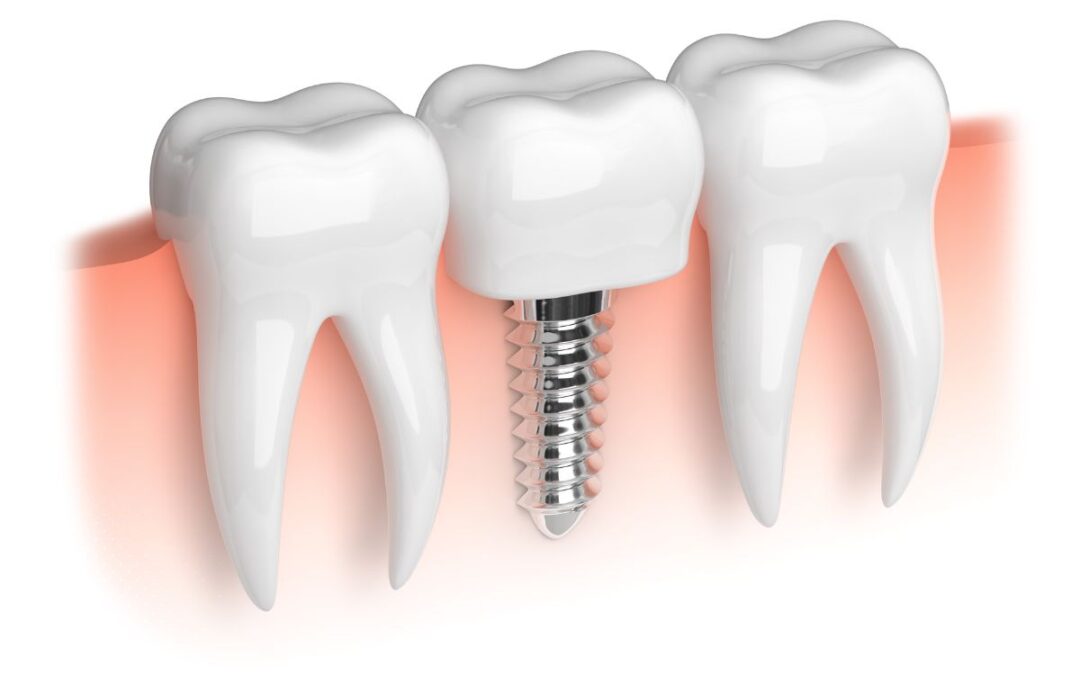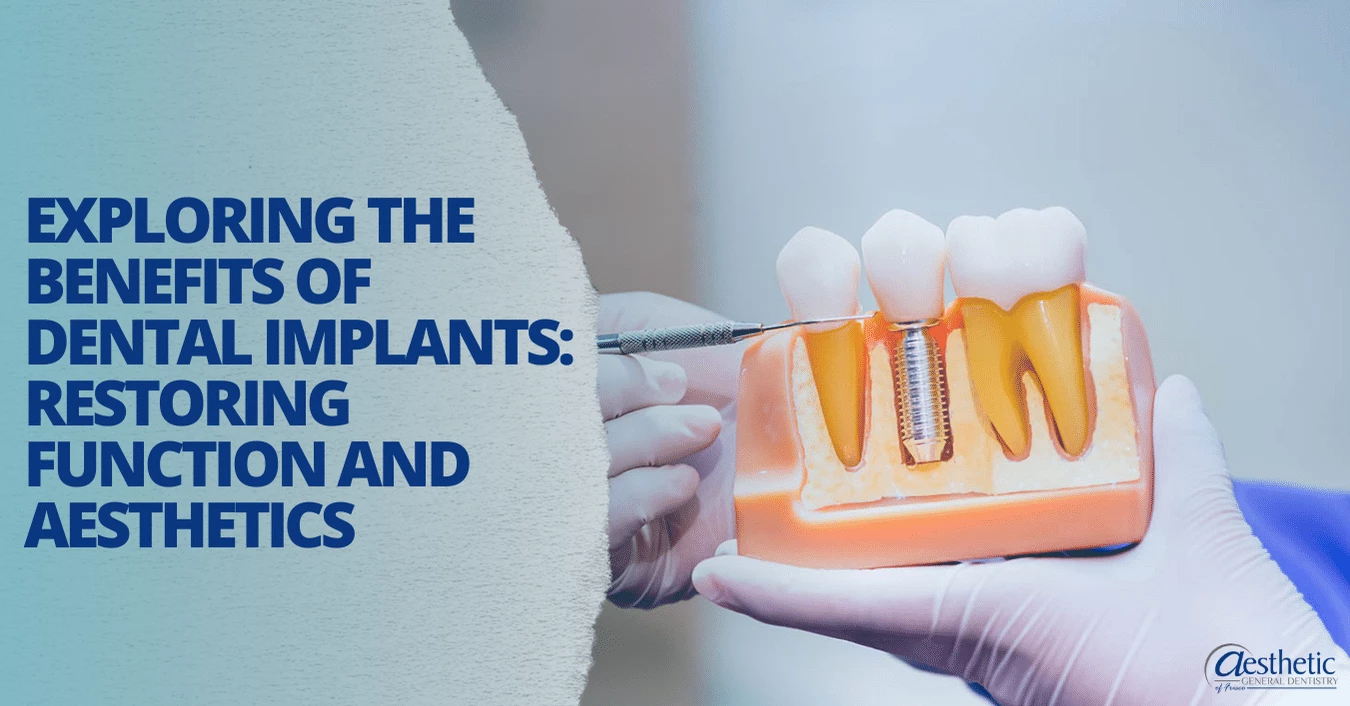Dental Implants: Restoring Function and Aesthetics
Dental implants have revolutionized the field of restorative dentistry, offering a permanent solution to missing teeth. Whether you’re missing one tooth or several, dental implants can restore both the function and aesthetics of your smile. Unlike traditional dentures or bridges, dental implants are a more durable and natural-looking solution. In this article, we will explore how dental implants can restore your ability to eat, speak, and smile confidently, as well as their numerous benefits.

What are Dental Implants?
A dental implant is an artificial tooth root that is surgically placed into the jawbone. It serves as a sturdy base for a replacement tooth or bridge. Made from titanium or other biocompatible materials, dental implants integrate with the jawbone through a process called osseointegration, which provides a strong and durable foundation for the new tooth.
Unlike dentures or bridges, dental implants don’t require support from neighboring teeth, making them a self-sufficient solution that closely mimics natural teeth. Over time, implants help maintain the integrity of the jawbone by stimulating it, preventing bone loss that can occur when teeth are missing.
The Benefits of Dental Implants
1. Improved Functionality
Dental implants restore the ability to chew, speak, and bite like natural teeth. They are designed to mimic the function of a real tooth, which helps improve your overall quality of life. With implants, you can eat your favorite foods without worrying about dentures slipping or discomfort.
- Chewing: Implants are strong and stable, allowing you to chew food without restrictions.
- Speech: Missing teeth can lead to speech issues, but with implants, your pronunciation improves, and you can speak clearly.
- Comfort: Unlike traditional dentures, which may shift or slip, dental implants become part of your natural anatomy, ensuring comfort and stability.
2. Long-Term Durability
Dental implants are designed to last a lifetime when properly cared for. The osseointegration process ensures that the implant bonds with the jawbone, making it incredibly stable. Unlike bridges or dentures, which may require replacement or adjustments over time, dental implants provide a long-lasting solution that doesn’t need constant maintenance.

3. Enhanced Aesthetics
One of the key advantages of dental implants is their ability to restore the natural appearance of your smile. Implants are designed to look and feel like your natural teeth, blending seamlessly with your existing teeth. The crown placed on the implant is custom-made to match the shape, size, and color of your surrounding teeth, ensuring a natural, beautiful appearance.
Dental implants not only restore function but also help maintain the structure of your face. When teeth are missing, the jawbone can shrink over time, causing the face to look sunken or aged. Implants stimulate the bone, preventing this bone loss and preserving the contour of your face.
4. No Need to Alter Adjacent Teeth
Unlike bridges, which require the filing down of adjacent teeth for support, dental implants do not require any alteration to nearby teeth. This preserves the natural integrity of your surrounding teeth, preventing any unnecessary damage or discomfort.
5. Prevents Bone Loss
When a tooth is lost, the underlying jawbone can begin to deteriorate due to lack of stimulation. Over time, this bone loss can lead to further tooth loss and changes in the structure of the face. Dental implants help prevent bone loss by providing the same stimulation to the jawbone as natural teeth, maintaining its strength and volume.

The Dental Implant Procedure
1. Initial Consultation
The first step in the dental implant process is a thorough consultation with your dentist. During this appointment, your dentist will evaluate your oral health, including the condition of your teeth, gums, and jawbone. They may take X-rays or 3D scans to determine the best approach for implant placement. If you have insufficient bone density, your dentist may recommend a bone graft before proceeding with the implant.
2. Implant Placement
The next step is the surgical placement of the implant into the jawbone. This is typically done under local anesthesia to ensure comfort during the procedure. The implant is inserted into the bone where the tooth root used to be. After placement, the area is sutured, and the healing process begins.
The osseointegration process usually takes several months, during which the implant fuses with the jawbone. This creates a strong, stable foundation for the artificial tooth.
3. Abutment and Crown Placement
Once the implant has fully integrated with the bone, your dentist will place an abutment on top of the implant. The abutment serves as a connector between the implant and the custom-made crown. After the abutment is placed, impressions of your teeth will be taken to create the final crown, which will be securely attached to the abutment.
The result is a fully functional, natural-looking tooth that blends seamlessly with your smile.
4. Aftercare and Maintenance
After the procedure, proper care is essential to ensure the success of your dental implant. Following your dentist’s instructions for oral hygiene and follow-up appointments is crucial. Brushing and flossing around the implant site will help prevent infection and ensure that the implant remains in excellent condition. Routine dental visits will allow your dentist to monitor the implant and overall oral health.
Who is a Candidate for Dental Implants?
Dental implants are a great option for most people, but there are certain factors that may affect your eligibility. Ideal candidates for dental implants include individuals who:
- Have healthy gums and enough bone mass in the jaw to support the implant.
- Are in good overall health, as certain medical conditions may affect the healing process.
- Do not have significant oral health issues, such as gum disease or severe tooth decay.
- Are committed to good oral hygiene and maintaining the health of their implants.
If you have insufficient bone mass, your dentist may recommend additional procedures such as bone grafting to ensure that the implant can be successfully placed.
Cost of Dental Implants
The cost of dental implants can vary depending on several factors, including the number of implants required, the location of the procedure, and any additional treatments such as bone grafts or sinus lifts. While dental implants can be more expensive than traditional dentures or bridges, their long-term durability and functionality make them a worthwhile investment.
Many dental offices offer payment plans or financing options to help make dental implants more accessible. It’s important to check with your insurance provider to see if implants are covered under your plan.
Frequently Asked Questions (FAQs)
Q1: Are dental implants painful?
A1: Dental implants are typically placed under local anesthesia, so you should not feel any pain during the procedure. Afterward, some discomfort and swelling are normal, but this can usually be managed with over-the-counter pain relievers.
Q2: How long do dental implants last?
A2: With proper care and maintenance, dental implants can last a lifetime. The crown may need to be replaced after 10-15 years, but the implant itself should remain intact.
Q3: Can I eat normally with dental implants?
A3: Yes! Once the implant has fully integrated with the jawbone, you can eat and chew normally, just like with natural teeth.
Q4: Are there any risks with dental implants?
A4: While dental implants are generally safe, there are potential risks such as infection, implant failure, or nerve damage. However, these risks are rare, and a skilled dentist will minimize them during the procedure.
Q5: How do I care for my dental implants?
A5: Caring for dental implants is similar to caring for natural teeth. Brush and floss daily, visit your dentist regularly for checkups, and avoid chewing on hard objects that could damage the implant.
Conclusion
Dental implants are a reliable, long-term solution for those seeking to restore the function and aesthetics of their smile. By providing a stable, natural-looking tooth replacement, dental implants offer a wide range of benefits, including improved functionality, durability, and comfort. If you’re considering dental implants, consult with a skilled implant dentist to determine if you’re a suitable candidate and explore how this transformative procedure can enhance your life.
For more information on dental implants, visit American Academy of Implant Dentistry.

